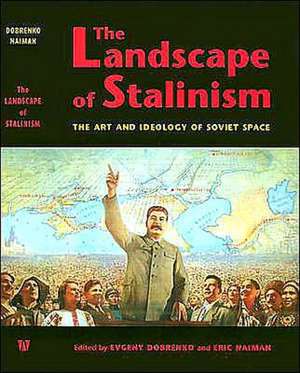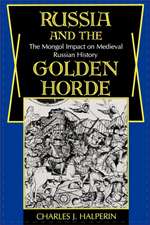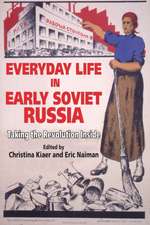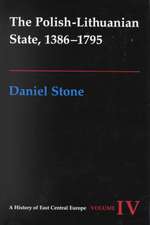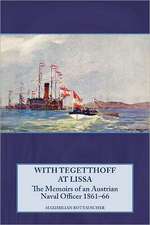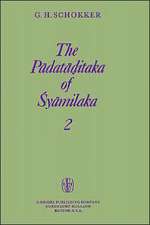The Landscape of Stalinism – The Art and Ideology of Soviet Space
Autor Evgeny Dobrenko, Eric Naimanen Limba Engleză Hardback – 31 iul 2003
From backgrounds in history, art history, literary studies, and philosophy, the contributors show how Soviet space was sanctified, coded, and �sold� as an ideological product. They explore the ways in which producers of various art forms used space to express what Katerina Clark calls �a cartography of power� -- an organization of the entire country into �a hierarchy of spheres of relative sacredness,� with Moscow at the center. The theme of center versus periphery figures prominently in many of the essays, and the periphery is shown often to be paradoxically central.
Examining representations of space in objects as diverse as postage stamps, a hikers� magazine, advertisements, and the Soviet musical, the authors show how cultural producers attempted to naturalize ideological space, to make it an unquestioned part of the worldview. Whether focusing on the new or the centuries-old, whether exploring a built cityscape, a film documentary, or the painting Stalin and Voroshilov in the Kremlin, the authors offer a consistently fascinating journey through the landscape of the Soviet ideological imagination.
Not all features of Soviet space were entirely novel, and several of the essayists assert continuities with the prerevolutionary past. One example is the importance of the mother image in mass songs of the Stalin period; another is the "boundless longing" inspired in the Russian character by the burden of living amid vast empty spaces. But whether focusing on the new or the centuries-old, whether exploring a built cityscape, a film documentary, or the painting Stalin and Voroshilov in the Kremlin, the authors offer a consistently fascinating journey through the landscape of the Soviet ideological imagination.
| Toate formatele și edițiile | Preț | Express |
|---|---|---|
| Paperback (1) | 264.99 lei 6-8 săpt. | |
| MV – University of Washington Press – 31 iul 2003 | 264.99 lei 6-8 săpt. | |
| Hardback (1) | 648.72 lei 6-8 săpt. | |
| MV – University of Washington Press – 31 iul 2003 | 648.72 lei 6-8 săpt. |
Preț: 648.72 lei
Preț vechi: 842.50 lei
-23% Nou
Puncte Express: 973
Preț estimativ în valută:
124.13€ • 129.95$ • 102.71£
124.13€ • 129.95$ • 102.71£
Carte tipărită la comandă
Livrare economică 05-19 aprilie
Preluare comenzi: 021 569.72.76
Specificații
ISBN-13: 9780295983332
ISBN-10: 0295983337
Pagini: 344
Ilustrații: 35 illustrations
Dimensiuni: 152 x 229 x 15 mm
Greutate: 0.6 kg
Editura: MV – University of Washington Press
ISBN-10: 0295983337
Pagini: 344
Ilustrații: 35 illustrations
Dimensiuni: 152 x 229 x 15 mm
Greutate: 0.6 kg
Editura: MV – University of Washington Press
Recenzii
The editorsforemost scholars in their own righthave gathered in this volume the leading scholars that are working currently in the field of Slavic studies. These essays each represent an innovation in the field of Slavic studies and, more generally, in the emerging interdisciplinary fields of the study of social and political space. This is one of those rare volumes that represents an event opening the disciplinary bounds and addressing itself to the reader of the future.Dragan Kujundzic, University of California, Irvine Offering a variety of perspectives on Russian culture of the Stalin period (from theoretical musings to down-to-earth archival historical research) and ranging in subject matter from the popular song, postage stamps, hikers magazines, and musicals to monumental architecture, film travelogues, Stalinist Bildungsroman, and the archetypal Moscow Metro, the collection should be used widely by students of modern Russian culture and politics.Gregory Freidin, Stanford University"This impressive collection contains twelve articles by leading scholars in the field,all focusing on the spatial dimensions of Stalinist idealogical discourse."--S.E.E.R.,84, 4, 2006
Cuprins
Notă biografică
Descriere
* A wide-ranging collection of essays exploring the promotion of Bolshevik Party ideology in the arts* In painting, architecture, literature, cinema, and song, images of landscape were enlisted to help mold the masses into joyful, hardworking citizens of a state with a radiant, utopian future* Offers a consistently fascinating journey through the landscape of the Soviet ideological imagination
